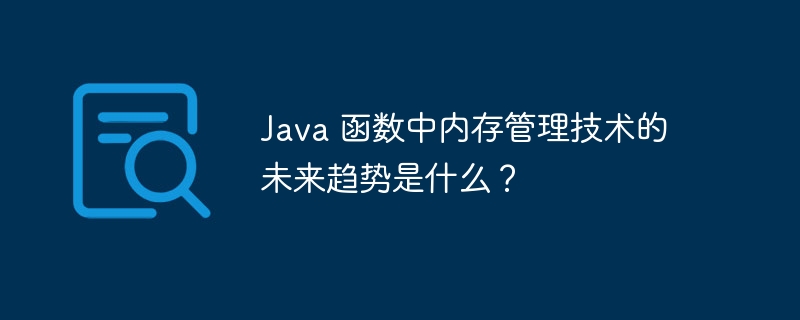
Future memory management trends in Java functional programming: G1 GC: Partitioned heap to improve predictability and parallelism. Value types: stack storage, eliminating object overhead. Memory Scope: Explicit lifecycle control to prevent leaks.

Future Trends in Memory Management in Java Functions
The functional programming paradigm is becoming more and more popular in Java development. What follows is in-depth thinking about memory management technology. Traditional Java technology has shortcomings that future trends are seeking to address.
Problems and Challenges
Memory management in traditional Java is done manually and relies on garbage collection (GC). Although GC has come a long way, it still has some disadvantages:
Future Trends
To address these challenges, the Java community is exploring new memory management technologies:
Structured Parallelism GC (G1): G1 is a modern GC introduced in Java 9 and later, designed to provide better predictability and parallelism. It segments the heap by dividing it into different regions and assigning each region to different age groups. This allows G1 to focus on collecting older regions, improving performance and reducing pause times.
Value Types: Value types are new types introduced in Java 8 and above that behave like primitive types but have object functionality. They are stored on the stack rather than the heap, which eliminates some of the overhead associated with object allocation and garbage collection.
Memory Scope: Java 12 and later introduced the concept of memory scope. Memory scopes allow explicit control over the lifetime of objects, thus preventing memory leaks and improving GC efficiency.
Practical Case
Consider the following code example that shows how to use G1 GC:
// 使用 G1 GC
public static void main(String[] args) {
// 获得 G1 GC 实例
G1GarbageCollector g1GC = (G1GarbageCollector) GarbageCollectorFactory.getGC();
// 调整 G1 GC 设置
g1GC.setParallelism(8); // 将并行度设置为 8
g1GC.setConcMarkThreads(4); // 将并发标记线程数设置为 4
// 执行并行垃圾回收
g1GC.run();
}By using G1 GC and adjusting its settings, we can Achieve better predictability and higher performance in your applications.
Conclusion
Memory management technology is crucial in Java functional programming. Future trends are looking to address shortcomings present in legacy technologies such as G1 GC, value types, and memory ranges. By leveraging these technologies, developers can build more efficient and predictable applications.
The above is the detailed content of What are the future trends in memory management technology in Java functions?. For more information, please follow other related articles on the PHP Chinese website!
